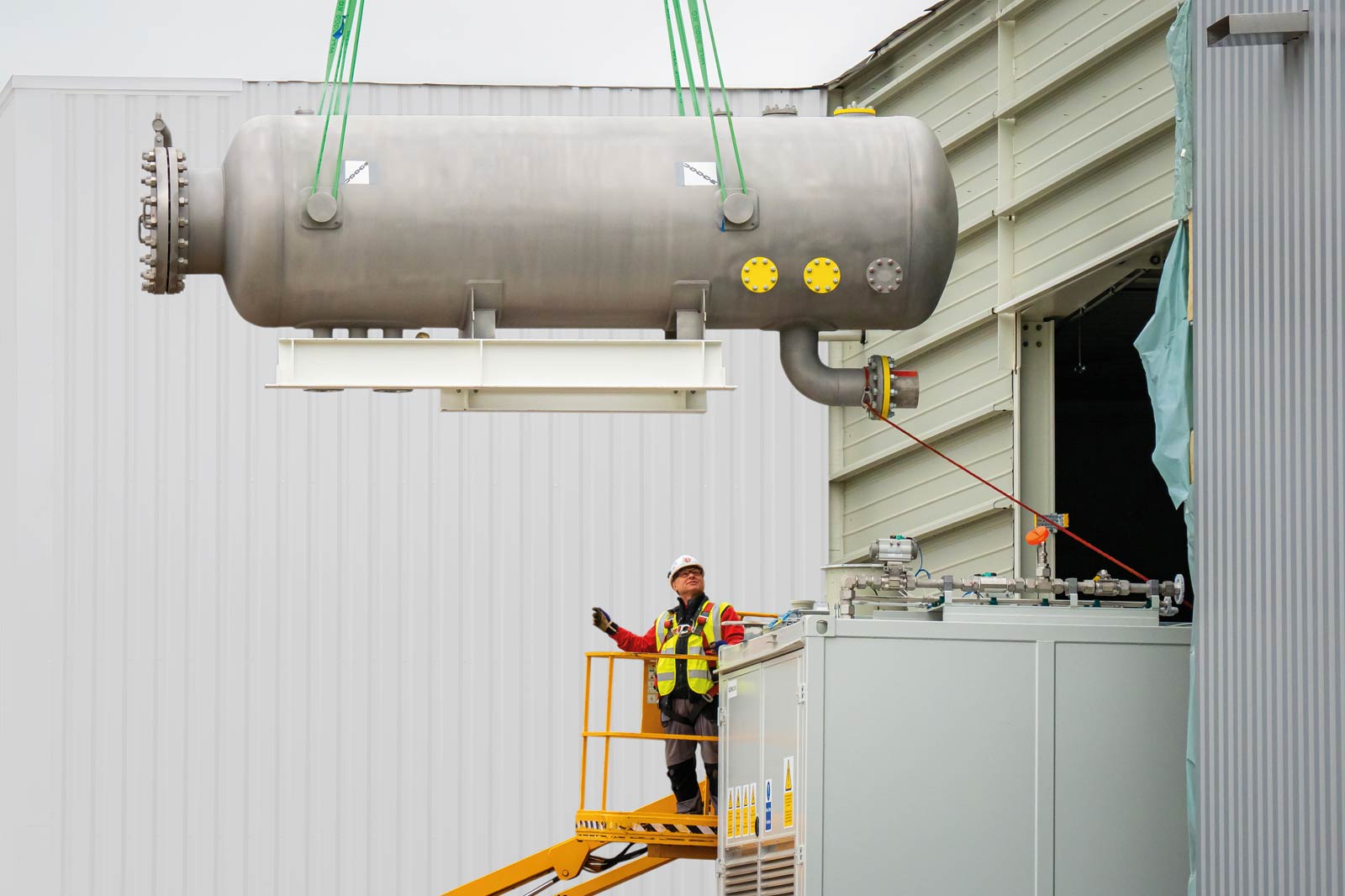12.12.2024
"In recent weeks, media and online platforms have been creating the impression that green hydrogen is getting nowhere. It is true that the industry and energy sector have moved from a euphoric bubble into a more realistic world. That is part and parcel of the large-scale development of a new technology. But green hydrogen is coming. The cabinet's decision to prioritise hydrogen and CO₂ pipelines in the Delta Rhine Corridor (DRC) helps.
Green hydrogen is key to helping industry become more sustainable. It can also eventually play a role in making power plants carbon-free, and it is going to help reduce emissions in the transport sector. Nothing has changed about this potential, and much has been achieved in recent years to take this form of sustainability further. Much knowledge has been built up on the role of green hydrogen in the entire value chain. We see the need from industry and the opportunities for in-house production versus imports. But it has not yet proved to be enough, with hardly any green hydrogen available.
Expand
The costs are still too high compared to grey hydrogen and regulations not yet sufficiently clear, ACER, the European association of national energy regulators, also said in a recent report. To create clarity in their own markets, European countries need to translate European legislation into national regulations faster. Furthermore, renewable energy production should be built out and there should be better planning of where electrolysers are needed and thus where the infrastructure should be in place first. The government has clearly understood that infrastructure like the DRC is an important prerequisite. Without infrastructure, nothing can be delivered and hence there will be no production.
Furthermore, policy needs to ensure that the demand for green hydrogen will grow and we still have some financial issues to sort out, such as the high network costs. The recently published proposals for using green hydrogen in mobility do not help either (refinery route). Those make it uninteresting to invest. That needs to be changed. And make sure the Climate Fund budget for hydrogen is maintained. A deal is a deal. We must limit the net tariffs for transport in the Netherlands and fix them for several years. As a sector, we benefit from predictability.
This also means looking beyond 2030 and thus planning and setting targets for 2035 and 2040. I hope the European Hydrogen Bank will be able to provide certainty on tenders for eligibility even before those deadlines.
Leaders
RWE is among the leaders in developing projects and building knowledge in green hydrogen: a number of demonstration and test facilities are under construction or operational at sites in the UK, the Netherlands and Germany. GetH2 in Lingen is RWE's flagship hydrogen strategy project.
With the construction of a 300 MW electrolysis plant here, RWE is kicking off the development of a nationwide hydrogen infrastructure.
40 partners are working together there. In the UK, RWE is betting on Pembroke, where the gas-fired power plant of the same name will host a new hydrogen knowledge centre. RWE is combining the 795 MW offshore wind project OranjeWind in the Netherlands with an extensive knowledge and systems integration programme, including hydrogen. In addition, RWE is developing hydrogen projects in Groningen, Rotterdam and Zeeland and working with innovative partners to enable their realisation.
So a lot is happening at RWE and at other market players. And steps have also been made in political The Hague: the recent announcement about the rapid construction of the DRC, special subsidies such as OWE for projects have been deployed and recently a lower energy tax rate and a wider input exemption were agreed as part of the Tax Plan. Yet, it is still too little and too uncertain to take the step towards investment decisions.
Directed
It will therefore have to be done in small steps. And with clear direction, to let everyone take the right turn. This directive role suits the government: looking together at how things can be done and thus still making a valuable contribution to the sustainability goals. In short: the road to introduction is bumpy, but green hydrogen will come.

